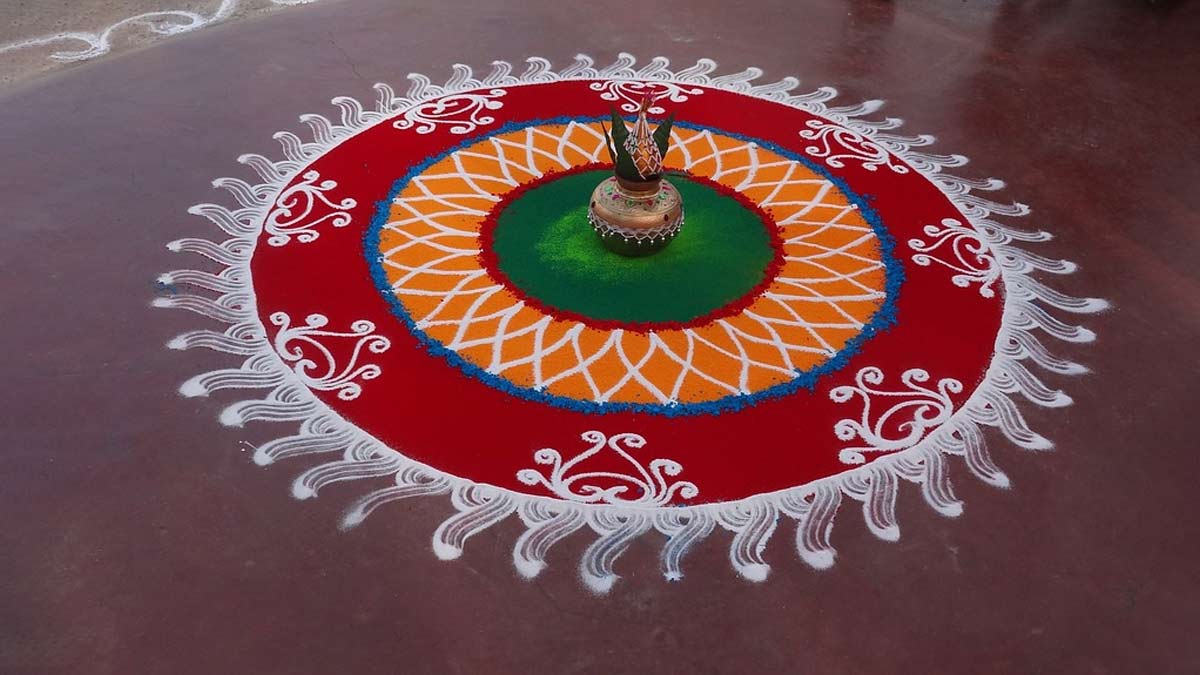
Diwali 2022: Legends And Significance Of Designing Rangoli On The Festival
On Diwali, there is nary a house celebrating that does not craft a vibrant rangoli at the entrance of the house. Those who are not artistic enough create a small design with flowers in the home temple or simply write ‘Happy Diwali’ with petals.
However, even though everyone follows this tradition, not everyone knows why and when it all started. This article traces the myths and legends around the significance of making rangoli during Diwali or any other auspicious occasions.
Legends Of Goddess Lakshmi

According to popular legends, Diwali is also celebrated to welcome Goddess Lakshmi into our homes. She is the epitome of wealth and prosperity. Therefore, people draw rangolis outside their homes to welcome her.
Since myths say that the Goddess used to sit on a lotus flower, many people add petals on the border of the design. Devotees get all sorts of creative ways to add elements that are associated with Lakshmi in order to impress her.
In parts of Bihar and Bengal, people design patterns with small foot prints as a symbol of the Goddess entering their houses. In Andhra Pradesh, devotees draw a special kind of rangoli with an eight-petal lotus (Ashtadal Kamal) using geometric patterns. In Tamil Nadu, the design of the sacred flower is replaced by an eight-pointed star (Hridaya Kalam). Gujarat, however, is famous for drawing multiple variations of the lotus during Diwali (ethnic outfits for Diwali) celebrations.
Sign Of Positive Energy

Many people design rangolis at the entrance of their houses to invite positive vibes. They believe that it is a symbol that can ward off negative energy.
According to folklore, people design complicated rangolis so that they can trap negative energy floating in the air. By absorbing all the evil, these designs protect us and promote positive thinking.
Rangoli Patterns & Their Significance

Most people follow a theme while designing a rangoli during Diwali. For example, if someone is a devotee of Lord Krishna, they would design it in the shape of a peacock or keep it in the centre and craft geometric patterns around it.
Many people draw a design in the shape of the God or Goddess that they worship. However, many restrain from doing so because they believe that it becomes disrespectful to God when the rangoli is erased the next day of Diwali.
Don't Miss: Complete List Of Festivals In October 2022
Significance Of Drawing Rangoli Traces Back To Africa

According to many reports, designing rangoli is not only a part of Indian culture, but can be traced back to an African tribe who reportedly had a tradition of crafting mandala-like designs after prayers.
Don't Miss: Budget-Friendly Home Decoration Ideas To Spruce Up Your Home
The tradition also included the devotees sitting around the pattern. People in the tribe used to create such a design that could attract animals, making it easier to hunt.
Let us know in the Facebook comments why rangoli and its pattern signify for you and your family.